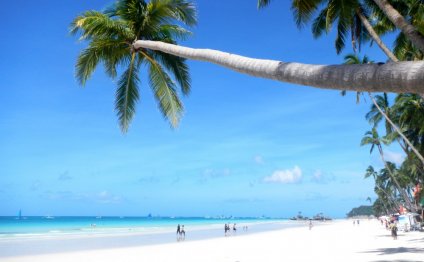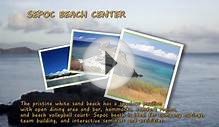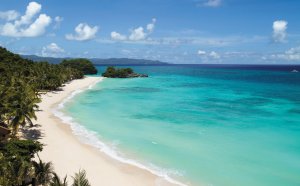
Best destinations Philippines
With more than 4, 000 reader votes tabulated in our 2015 Top 100 Readers Choice Awards, the “Pearl of the Orient Seas” — the Philippines — popped up in a number of categories, including Top 10 nods for Best Overall Diving and Best Overall Destination in the Indo-Pacific. We’re not surprised. With diverse and unique underwater experiences found along its 22, 000-mile-long coast in the western Pacific, this country ranks No. 1 for many divers.
SMALL WONDERS
Voted No. 2 in the Pacific and Indian Ocean region for Best Macro Diving, the Philippines’ seascape never fails to please those on the hunt for unearthly small stuff. Experienced macro and muck photographers on their first trip to the islands are often surprised by the eccentric macro critters found in waters close to their arrival destination, Manila.
Just a three-hour drive south from the capital, Anilao’s rocky shores are legendary for their prolific life — including a plethora of nudibranchs — and beautiful reefs. Sites such as Mainit Muck (aka Secret Bay) and Bethlehem, of Maricaban Island, are rich wonderlands filled with tiny curiosities such as seahorses, ghost pipefish, frogfish and mantis shrimp. In four hours, you can reach the lively dive harbor of Puerto Galera, sometimes called the Nudibranch Capital of the World — you’ll fll your logbook and macro lens with colorful sea slugs such as Chromodoris lochi, Bornella anguilla and Nembrotha kubaryana. The Dumaguete/Dauin area on the island of Negros is less than an hour’s fight from Manila and offers a macro kingdom: Squat lobsters, wonderpus octopuses and pipefish are among the subjects found mere fin kicks from the beach.
WRECK DELIGHTS
In 1941 the Philippines were a United States Territory and the site of some of the most dramatic battles of World War II. During the Philippines Campaign, American and Filipino soldiers fought side by side under the most difficult conditions imaginable. The invasion by the Japanese Imperial forces and the campaign to expel them left visiting divers with some spectacular WWII wrecks that are well worth visiting — and landed the country a Top 10 ranking for Best Wreck Diving in the Indo-Pacific.
Northwest of Manila, Subic Bay is a protected harbor used by the United States, Spain and Japan at various times. The treasure trove of wrecks here is accessible year-round, and ranges from Japanese and U.S. naval vessels, including the 360-foot USS New York, to a Spanish galleon just outside the bay. Coron, a sleepy island north of Palawan Island, is home to the wrecks of the Japanese supply feet sunk in September 1944, including the 482-foot Irako and the 550-foot Okikawa Maru. Coron’s remote location has allowed spectacular corals and other marine life to flourish on many of the sunken vessels.
PROTECTED PARKS
With world-renowned Tubbataha Reefs Natural Park, a UNESCO World Heritage Site, among its natural treasures, it shouldn’t be a surprise that the islands earned a Top 10 award for Overall Best Diving. Tubbataha is comprised of two main atolls — and one remote reef — that serve as a marine nursery for much of the Sulu and Sulawesi seas.
These shallow reefs are reached only by liveaboard, and for just a few months of the year due to weather. Charters often sell out a year in advance, but for the lucky few who manage to book a trip, the crystal-clear waters are another world.
The fields of pristine hard coral and the massive schools of fish are like nowhere else in the Philippines. Count on seeing big grouper and tuna, whitetip and blacktip sharks, and schooling jacks in the hundreds. Also possible are manta, whale shark and hammerhead sightings.
The sheer walls of Apo Reef can also be reached only by liveaboard, and the remote wilderness provides surprises at any moment. Big discoveries abound, but so do small ones, with many smaller species of fish that are not found in the coastal regions.
Danjugan Island — of southwestern Negros — is a quiet, of-the-radar reserve where juvenile blacktip sharks hunt in the clear-water mangroves, and the surrounding reefs and seamounts are visited mainly by volunteers conducting fish counts. Access is from a few isolated resorts on Negros.
FINS AND FLUKES
One-of-a-kind is not hyperbole when it comes to the little island of Malapascua, the only known thresher shark cleaning station in the world that is within recreational dive limits. The island takes some work to get to — first, a fight to Cebu, then several hours’ drive north, and finally a ride in a bangka boat (an outrigger canoe) to the perfect white sand beach of Malapascua — but this only adds to the magic of the place. Boat departures to Monad Shoal are often before dawn, as the cleaning stations are most active in the morning. Nothing can prepare divers for their first encounter with a 12-foot thresher shark — you’ll be hypnotized by its sensuous, ribbonlike tail fn. Enormous pelagic mantas also cycle in to be cleaned.
WHERE THE WHALE SHARKS ARE
Whale sharks can appear anytime and anywhere in the Philippines, but there are some places that have become very reliable, such as Oslob on Cebu, Donsol on Luzon, and Southern Leyte.
Large aggregations of whale sharks are common in Donsol from December to May, though this can vary from year to year. The whale shark tour boats are well established and plentiful. Oslob is famous for the local fishermen who attract small fish by scattering dry brine shrimp on the water’s surface and then netting the fish. As a byproduct of this method, a bevy of whale sharks hang around all year, slurping brine shrimp. They now ignore the canoes full of snorkelers who roll in fewer than 100 yards from shore. Southern Leyte is less crowded, with only a few land-based resorts and an occasional liveaboard offering encounters with the planet’s biggest fish.
CURRENT-SWEPT REEFS
The Philippines is a crazy quilt of interlocking islands, seas and shoals. A tremendous amount of water swirls around the volcanic landforms, creating reefs that are almost constantly swept by currents. The reefs are home to large schools of dazzling reef fish pulsing over the hard and soft corals. Anthias, snapper, jacks, butterflyfish, and jewel-like damsels form in huge numbers, and offer divers a mesmerizing marine-life panorama. Dozens of dives are concentrated around the current-washed shores in the Southern Visayas, Apo Island and Verde Island.
SPLENDOR IN THE GRASS
Dugong encounters are rare these days thanks to their shy nature, mishaps with boat propellers, and loss of habitat. Only in a few locations in the world can you reliably find them and hopefully get close enough for images. In the Philippines, this marine mammal prefers to eat the long sea grass found in the waters around Dimakya Island. While they are in graze mode, dugongs will largely ignore people, but once they are satiated, dugong hind quarters might be all you see.
Fortunately, green sea turtles also feed on the sea grass here, and by late afternoon, they can often be found blissfully munching this marine “lawn.” Dugong season is generally March to June, when the winds are calmer — which also makes spotting them easier.
SUBTERRANEAN EXPLORATION
Scattered throughout the archipelago is a unique topography rich in limestone substrate pockmarked by unmapped caves and caverns that only a few highly trained divers are now discovering. Even though the islands nabbed a Top Five spot in the Readers Choice Awards for cave diving in the Indo-Pacific, this is a young sport in the Philippines and would require a bit of research to undertake. Find the right connections, and a handful of experienced cave divers can make it happen.
RELATED VIDEO



Share this Post
Related posts
Best Destinations in the Philippines
What makes the Philippines a top Asian destination for beach bums and thrill seekers? Claimed as the world’s center of marine…
Read MoreTop Philippines Destinations
I always look forward to the next long weekend — who doesn’t? It’s the best time for you to maximise your travels, be it…
Read More










